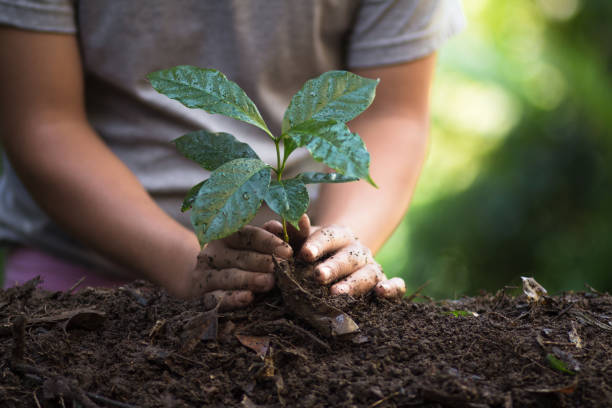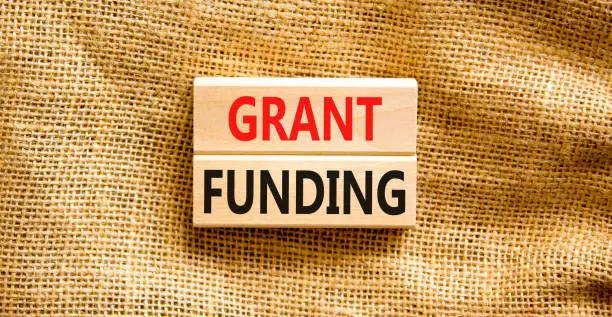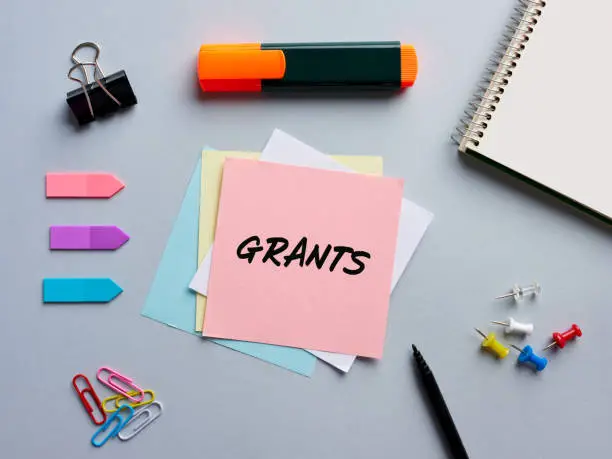Environmental conservation grants are financial awards given to support projects aimed at protecting and preserving natural resources, ecosystems, and biodiversity.
These grants are typically provided by government agencies, private foundations, nonprofits, and corporate sponsors that are committed to environmental sustainability.
The types of projects that receive funding vary widely, but they often focus on:
- Wildlife protection: Ensuring endangered species are safeguarded and biodiversity is maintained.
- Habitat restoration: Rehabilitating damaged ecosystems such as wetlands, forests, and grasslands.
- Climate change mitigation: Addressing the effects of climate change through innovative solutions such as renewable energy projects or reforestation.
- Pollution control: Developing technologies or programs to reduce pollution and waste, including plastic reduction and clean water initiatives.
- Sustainable agriculture: Promoting farming practices that protect the environment, enhance biodiversity, and ensure long-term agricultural productivity.
- Environmental education: Raising awareness and educating communities about environmental issues and sustainable practices.
Whether your project is focused on restoring a local forest or advancing sustainable agriculture practices, environmental conservation grants could provide the financial support you need to move forward.
Why Are Environmental Conservation Grants Important?
Environmental conservation grants play a significant role in shaping the future of the planet. These funds make it possible to undertake large-scale, high-impact projects that governments or private organizations may not be able to fully support on their own. Grants also allow smaller, grassroots initiatives to thrive and create change in their communities.
The importance of these grants can be illustrated through a few key points:
- Protection of biodiversity: Grants enable the preservation of endangered species and their habitats, ensuring the survival of diverse life forms.
- Fighting climate change: Grants fund research and projects that help mitigate the impacts of global warming, such as carbon sequestration and renewable energy development.
- Innovation in conservation practices: Many grants go to organizations that develop new, cutting-edge conservation techniques, fostering innovation in the field.
- Community engagement: Environmental conservation grants often support initiatives that educate and involve local communities in sustainability efforts, fostering a culture of environmental stewardship.
- Economic benefits: Conservation projects can create jobs, promote sustainable tourism, and support local economies while protecting the environment.
Types of Environmental Conservation Grants
There are many different types of environmental conservation grants available, each with specific eligibility requirements, funding amounts, and focuses. Here are some of the most common:
1. Government Grants for Environmental Conservation
Government grants are some of the most widely available funding options for environmental conservation projects. These grants come from federal, state, and local government agencies. They are designed to support both public and nonprofit organizations that are working on projects related to environmental conservation.
For example:
- EPA Environmental Education Grants: The U.S. Environmental Protection Agency (EPA) provides funding for projects that increase public awareness about environmental issues. These grants often focus on educating underserved communities about pollution, sustainability, and climate change. Learn more
- National Oceanic and Atmospheric Administration (NOAA) Grants: NOAA offers funding for projects focused on protecting marine ecosystems, including coral reefs, fisheries, and coastal areas. Explore NOAA Grants
- State-based environmental grants: Many states offer their own funding opportunities, such as the California Environmental Protection Agency’s grants for clean air projects. Check your state’s environmental agency website for more information.
2. Private Foundations and Corporate Grants
Private foundations and corporations often provide funding for environmental conservation efforts, especially those that align with their sustainability or corporate social responsibility goals. These grants can come in the form of one-time donations or multi-year funding.
Some well-known foundations include:
- The Nature Conservancy: This nonprofit organization offers grants to projects aimed at preserving the world’s most important ecosystems. Nature Conservancy Grants
- The Ford Foundation: This global foundation provides funding for projects that tackle environmental issues through social justice and community-based efforts. Ford Foundation Grants
- Walmart’s Sustainability Fund: Walmart offers grants to nonprofits and initiatives focused on sustainability, renewable energy, and sustainable agriculture. Walmart Sustainability
- The Rockefeller Foundation: Focuses on building resilience and promoting sustainable development. Rockefeller Foundation Grants
- Bill & Melinda Gates Foundation: While primarily focused on global health and education, they also support environmental initiatives that intersect with their mission. Gates Foundation Grants
3. Crowdfunding and Community Grants
For smaller environmental projects or community-based initiatives, crowdfunding can also be an effective tool to raise funds. Several platforms, such as GoFundMe or Kickstarter, enable individuals and organizations to raise money from supporters passionate about the environment.
Additionally, community grants offered by local government, banks, or corporations can fund smaller-scale projects such as urban gardens, local cleanups, or tree planting. These grants are often easier to obtain and can provide the seed money needed to start a project.
- GoFundMe: Ideal for raising funds for specific projects or emergencies. GoFundMe
- Kickstarter: Best for creative projects with a clear goal and timeline. Kickstarter
- Local community grants: Check with your city or county government, as well as local businesses, for grant opportunities tailored to your area.
How to Apply for Environmental Conservation Grants
The process of applying for an environmental conservation grant can vary depending on the grant provider, but there are some general steps to follow:
1. Identify Your Project Goals
Before you start applying, make sure you clearly define your project goals. Understand the environmental impact you want to make and how it aligns with the mission of the grant provider. For example, if you’re focusing on biodiversity conservation, you might want to apply for a grant that supports wildlife preservation. Being specific about your goals will help you tailor your application.
Tip: Use the SMART criteria—Specific, Measurable, Achievable, Relevant, Time-bound—to define your project goals.
2. Research Available Grants
The next step is to find the right grants for your project. There are a variety of ways to do this:
- Online databases: Websites like Grants.gov and Instrumentl offer searchable databases of environmental grants. You can filter by category, eligibility, and funding amount. Grants.gov | Instrumentl
- Foundation websites: Check the websites of well-known environmental foundations, such as the Rockefeller Foundation or the Gordon and Betty Moore Foundation, to find funding opportunities. Gordon and Betty Moore Foundation
- Networking: Attend environmental conferences, webinars, and meetings to learn about available grants from fellow conservationists and organizations.
- Subscribe to newsletters: Stay updated on new grant opportunities by subscribing to relevant newsletters, such as the Grant Writing Academy Newsletter.
Pro Tip: Create a spreadsheet to track potential grants, their deadlines, requirements, and your application status.
3. Prepare a Strong Application
Once you’ve found the right grants, the next step is to prepare a compelling application. This is where many applicants struggle, but you can increase your chances of success with these tips:
- Craft a clear project description: Describe your project, its goals, and how it will positively impact the environment. Be concise and focused.Example: “Our project aims to restore 50 acres of degraded wetlands in the XYZ region, enhancing habitat for migratory birds and improving water quality.”
- Provide data and statistics: Use data to show the urgency of your project. For example, citing studies on the decline of a particular species or the increasing rate of deforestation can demonstrate why your project matters.Example: “According to the World Wildlife Fund, wetland areas in the XYZ region have decreased by 30% over the past decade, threatening numerous species.”
- Budget clearly and realistically: Outline how the funds will be spent. This helps the grantor understand how you plan to allocate the funds and ensures they are used effectively.Example:
- Personnel: $10,000 for project manager and field staff
- Materials: $5,000 for planting native vegetation
- Equipment: $3,000 for water testing kits
- Miscellaneous: $2,000 for community outreach
- Proof of partnerships and collaborations: If your project involves working with other organizations or experts, make sure to mention them. This shows you have a network of support and expertise.Example: “We are partnering with the XYZ University Department of Ecology and the ABC Local Community Group to ensure comprehensive project implementation.”
- Create a compelling narrative: Tell a story that connects emotionally with the grantor. Explain why you are passionate about the project and the difference it will make.Example: “As a lifelong resident of the XYZ region, I have witnessed firsthand the devastating effects of wetland loss on our community and wildlife. This project is not just about conservation; it’s about preserving the natural heritage for future generations.”
- Follow the guidelines: Carefully read and adhere to the grant guidelines. Missing a required document or not following the format can disqualify your application.Checklist:
- Cover letter
- Project proposal
- Budget
- Letters of support
- Organizational information
Common Mistakes to Avoid:
- Lack of clarity: Ensure your proposal is clear and easy to understand.
- Ignoring the grant’s mission: Align your project with the grantor’s goals and priorities.
- Poor budgeting: Provide a realistic and detailed budget.
- Missing deadlines: Submit your application on time.
4. Follow Up
After you submit your grant application, don’t forget to follow up with the grant provider. This shows your commitment and enthusiasm for the project. If your application is rejected, ask for feedback so you can improve your future submissions.
Follow-Up Tips:
- Send a thank-you email: Express gratitude for the opportunity to apply.
- Inquire about the decision timeline: Understand when you can expect to hear back.
- Request feedback: If unsuccessful, ask for constructive feedback to strengthen future applications.
Where to Find Environmental Conservation Grants
If you’re looking for environmental conservation grants, here are a few key places to start your search:
- EPA Grants: The U.S. Environmental Protection Agency offers grants for environmental education, air quality, water conservation, and much more. EPA Grants
- The Wildlife Conservation Society: This nonprofit offers grants to wildlife and habitat protection projects. Wildlife Conservation Society Grants
- The Packard Foundation: Focuses on global conservation, including ocean and land conservation efforts. Packard Foundation Grants
- Google.org: Google’s philanthropic arm funds projects focused on sustainability and environmental innovation. Google.org
- National Geographic Society Grants: Supports projects that align with their mission to explore and protect the planet. National Geographic Grants
- Sierra Club Foundations: Offers grants for various environmental initiatives, including climate action and conservation. Sierra Club Grants
Success Stories: How Grants Made a Difference
Hearing about successful grant applications can inspire and guide your own efforts. Here are a few examples of how environmental conservation grants have made a tangible impact:
1. Restoring Coral Reefs in the Caribbean
The Coral Restoration Foundation received a grant from the NOAA to restore damaged coral reefs in the Caribbean. With the funding, they were able to transplant over 1 million coral fragments, significantly enhancing reef resilience against climate change and pollution. This restoration effort not only supports marine biodiversity but also boosts local tourism and fisheries.
2. Urban Green Spaces in New York City
A small nonprofit organization in New York City secured a grant from the Walmart Sustainability Fund to create urban green spaces in underserved neighborhoods. The project involved planting trees, creating community gardens, and establishing green rooftops, which improved air quality, provided fresh produce to residents, and created recreational areas for the community.
3. Protecting Endangered Species in Africa
The Wildlife Conservation Society awarded a grant to a team working to protect the critically endangered African elephant. The funding was used to implement anti-poaching measures, conduct population surveys, and engage local communities in conservation efforts. As a result, elephant populations in the targeted areas have stabilized, and poaching incidents have decreased.
Data and Stats to Support Your Environmental Project
Including data and statistics in your grant proposal not only strengthens your application but also provides concrete evidence of the importance of your project. Here are some useful stats for environmental conservation:
- Biodiversity Loss: According to the World Wildlife Fund, we have lost 68% of the world’s biodiversity in just 50 years. This rapid decline threatens ecosystem services that humans rely on, such as pollination, water purification, and climate regulation.
- Climate Change: A 2021 report from the Intergovernmental Panel on Climate Change (IPCC) states that human influence has warmed the climate at a rate unprecedented in the last 2,000 years. The report emphasizes the urgent need for mitigation and adaptation strategies to prevent catastrophic impacts.
- Pollution: The World Health Organization (WHO) reports that 9 out of 10 people breathe air containing high levels of pollutants, leading to health issues and environmental damage. Addressing air pollution can significantly improve public health and environmental quality.
- Deforestation: The Food and Agriculture Organization (FAO) estimates that the world lost approximately 10 million hectares of forest each year between 2015 and 2020. Deforestation contributes to climate change, loss of biodiversity, and disruption of water cycles.
- Water Scarcity: According to the United Nations, over 2 billion people live in countries experiencing high water stress. Conservation projects that focus on water management and protection are critical for ensuring access to clean water.
Common Challenges in Securing Environmental Conservation Grants
While environmental conservation grants offer significant opportunities, applicants often face several challenges. Understanding these obstacles can help you prepare better and increase your chances of success.
1. Highly Competitive Landscape
Environmental grants are highly sought after, making the competition stiff. To stand out, your proposal needs to be well-written, clearly demonstrate impact, and align closely with the grantor’s priorities.
Solution: Invest time in researching the grant provider and tailoring your application to their specific goals. Highlight what makes your project unique and how it addresses the grantor’s objectives.
2. Limited Funding Availability
Even for large projects, funding can be limited. Grantors often have restricted budgets, meaning not all worthy projects will receive funding.
Solution: Diversify your funding sources by applying to multiple grants and exploring alternative funding methods such as crowdfunding or partnerships. Create a fundraising plan that includes various streams of income.
3. Complex Application Processes
Grant applications can be lengthy and complicated, requiring detailed documentation and adherence to specific guidelines.
Solution: Start early and give yourself plenty of time to complete the application. Create a checklist based on the grant guidelines and ensure all required documents are included. Consider seeking assistance from a grant writing professional if needed.
4. Demonstrating Impact
Grantors want to see that your project will make a meaningful difference. Demonstrating measurable outcomes can be challenging, especially for projects with long-term goals.
Solution: Clearly define your project’s objectives and how you will measure success. Include specific metrics and data to illustrate the potential impact. Use case studies or past successes to showcase your ability to achieve results.
Tips and Strategies for Successful Grant Writing
Mastering the art of grant writing can significantly improve your chances of securing environmental conservation grants. Here are some tips and strategies to help you craft a winning proposal:
1. Understand the Grantor’s Priorities
Before writing your proposal, thoroughly research the grantor’s mission, values, and funding priorities. Align your project with their goals to demonstrate that your initiative is a good fit.
Example: If a foundation prioritizes climate change mitigation, emphasize how your project contributes to reducing greenhouse gas emissions or enhancing carbon sequestration.
2. Tell a Compelling Story
A strong narrative can make your proposal memorable. Share the story behind your project, including what inspired it, the challenges you aim to address, and the positive changes you hope to achieve.
Example: “Our project was inspired by witnessing the decline of local bee populations, which are crucial for pollinating crops and maintaining ecosystem balance. By restoring wildflower habitats, we aim to support bee populations and ensure food security for our community.”
3. Provide Clear and Detailed Information
Be specific about your project’s objectives, activities, and timeline. Clear and detailed information helps grantors understand exactly what you plan to do and how you will accomplish it.
Example:
- Objective: Restore 100 acres of native prairie land within two years.
- Activities: Remove invasive species, plant native grasses and wildflowers, monitor soil health.
- Timeline:
- Month 1-3: Site assessment and invasive species removal
- Month 4-12: Planting native species
- Year 2: Ongoing monitoring and maintenance
4. Highlight Your Expertise and Capacity
Show that you have the skills, experience, and resources to successfully implement the project. Include information about your team, past projects, and any partnerships that enhance your capacity.
Example: “Our team includes ecologists with over 20 years of experience in habitat restoration, and we have successfully completed similar projects in three other states. Partnering with XYZ University provides us with access to additional expertise and resources.”
5. Demonstrate Sustainability
Explain how your project will continue to have an impact even after the grant funds are exhausted. Sustainability is a key concern for grantors who want to ensure long-term benefits.
Example: “After the initial restoration phase, we will engage local volunteers and establish a maintenance committee to ensure the ongoing care of the prairie. Additionally, we will apply for state funding to support continued monitoring and educational programs.”
6. Include a Realistic Budget
Provide a detailed and realistic budget that clearly outlines how the funds will be used. Ensure that your budget aligns with the activities and objectives described in your proposal.
Example:
- Personnel: $15,000 for project manager and field technicians
- Materials: $8,000 for native seeds and planting equipment
- Travel: $2,000 for site visits and community meetings
- Administrative Costs: $3,000 for office supplies and communication
- Total: $28,000
7. Use Clear and Concise Language
Avoid jargon and overly technical language. Your proposal should be easily understood by someone who may not be an expert in your field.
Example: Instead of saying, “We will implement a bioremediation strategy using indigenous flora,” say, “We will use native plants to clean and restore the contaminated soil.”
8. Proofread and Edit
Ensure your proposal is free of grammatical errors and typos. A polished, professional proposal reflects your attention to detail and commitment to the project.
Tip: Have someone else review your proposal before submission to catch any mistakes you might have missed.
Tools and Resources for Grant Writing
Effective grant writing requires the right tools and resources. Here are some valuable options to support your environmental conservation grant applications:
1. Grant Writing Software
- Instrumentl: A comprehensive platform that helps you find, manage, and apply for grants. It offers a searchable database and collaboration tools. Instrumentl
- GrantStation: Provides access to a vast database of grants and resources to improve your grant writing skills. GrantStation
- Foundation Directory Online: A powerful tool for finding private foundation grants. Foundation Directory Online
2. Templates and Samples
- Purdue OWL Grant Writing Resources: Offers templates and guidelines for writing grant proposals. Purdue OWL
- Grant Proposal Templates: Websites like Template.net and Smartsheet offer free grant proposal templates to help structure your application. Template.net | Smartsheet
3. Educational Resources
- Grant Writing Academy: Offers tips, strategies, templates, and tools to enhance your grant writing skills. Subscribing to their newsletter can provide ongoing support and updates. Grant Writing Academy Newsletter
- Coursera and Udemy: Online platforms offering courses on grant writing and nonprofit funding strategies. Coursera | Udemy
- Nonprofit Associations: Organizations like the Grant Professionals Association provide resources, webinars, and networking opportunities. Grant Professionals Association
4. Data Sources
- World Wildlife Fund (WWF): Offers reports and data on global biodiversity and conservation efforts. WWF Data
- Intergovernmental Panel on Climate Change (IPCC): Provides comprehensive climate data and reports. IPCC Reports
- United Nations Environment Programme (UNEP): Access to global environmental data and statistics. UNEP Data
Leveraging Partnerships and Collaborations
Building strong partnerships can enhance your grant application by demonstrating support and expanding your project’s reach. Here’s how to effectively leverage partnerships:
1. Identify Potential Partners
Look for organizations, universities, government agencies, and community groups that share similar goals and can complement your project. Partners can provide additional expertise, resources, and credibility.
Example: Partnering with a local university can offer access to research facilities and student volunteers, while collaborating with a community group can facilitate local engagement and support.
2. Formalize Partnerships
Create formal agreements or memorandums of understanding (MOUs) that outline each partner’s role, responsibilities, and contributions. This clarity helps prevent misunderstandings and ensures everyone is on the same page.
3. Highlight Partnerships in Your Proposal
Clearly outline how each partner will contribute to the project and the benefits of the collaboration. This demonstrates a united effort and strengthens your proposal.
Example: “We are partnering with XYZ University’s Department of Environmental Science to conduct biodiversity assessments and with ABC Community Group to engage local residents in restoration activities.”
Measuring and Reporting Impact
Grantors want to see that their investment is making a difference. Establishing a robust system for measuring and reporting your project’s impact is crucial for both securing funding and maintaining transparency.
1. Set Clear Metrics
Define what success looks like for your project and establish measurable indicators. Metrics can include the number of acres restored, species protected, community members engaged, or emissions reduced.
Example: “Our project aims to restore 100 acres of native prairie, increase the population of the endangered pollinator species by 20%, and engage 200 community volunteers in restoration activities.”
2. Collect Data Regularly
Implement a system for regularly collecting and analyzing data related to your metrics. This can involve field surveys, remote sensing, community feedback, and other data collection methods.
3. Report Progress to Grantors
Provide regular updates to your grantors, highlighting your achievements and any challenges encountered. Transparent reporting builds trust and demonstrates accountability.
Example: “Quarterly reports will be submitted to the grantor, detailing progress on habitat restoration, wildlife monitoring results, and community engagement activities.”
Overcoming Common Obstacles in Grant Writing
Even with a well-prepared application, obstacles can arise during the grant writing process. Here’s how to overcome some common challenges:
1. Time Constraints
Grant writing can be time-consuming, especially for organizations juggling multiple projects.
Solution: Start the grant application process early and create a timeline with deadlines for each component. Delegate tasks among team members to distribute the workload effectively.
2. Limited Writing Experience
Not everyone has extensive experience in grant writing, which can be daunting.
Solution: Utilize available resources such as templates, online courses, and professional grant writers. Collaborate with experienced team members or seek mentorship from organizations that have successfully secured grants.
3. Navigating Complex Guidelines
Grant guidelines can be intricate and vary significantly between funders.
Solution: Carefully read and understand the guidelines before starting your application. Create a checklist to ensure you meet all requirements and seek clarification from the grantor if needed.
4. Securing Reliable Data
Accurate and up-to-date data is essential for a strong proposal, but finding reliable sources can be challenging.
Solution: Use reputable sources such as government reports, academic research, and established environmental organizations. Collaborate with partners who can provide access to necessary data.
Final Thoughts
Securing environmental conservation grants can be a game-changer for your project, whether you’re protecting wildlife, restoring ecosystems, or tackling climate change.
Remember, grant writing is both an art and a science. It requires careful planning, clear communication, and a passion for your cause. Don’t be discouraged by setbacks—each application is a learning experience that brings you closer to your funding goals.
Are you looking for more tips, strategies, templates, and tools to help you with your grant writing process?
Subscribe to the Grant Writing Academy Newsletter to access valuable resources that will guide you every step of the way in your environmental conservation efforts.
Join a community of like-minded individuals dedicated to making the world a better place through effective grant writing and impactful projects.




